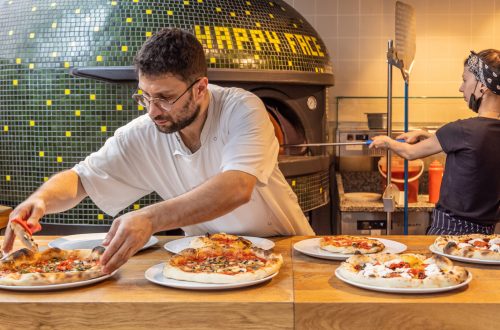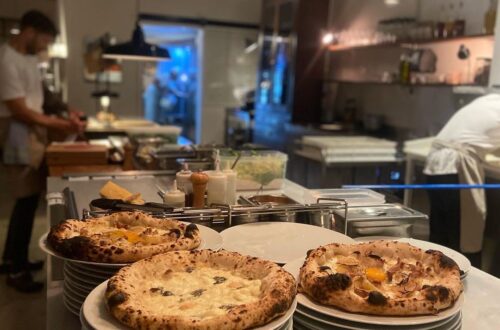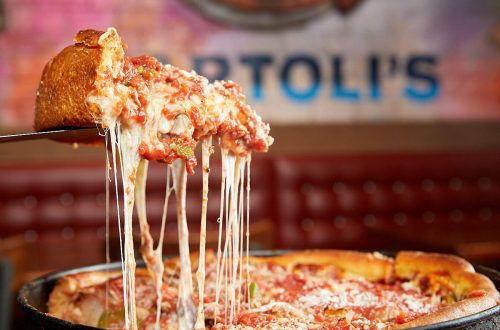
The Science of Pizza: Ingredients, Techniques, and Clues to Identifying Authentic Pizzerias
Pizza, the universally beloved dish, has undergone a fascinating evolution since its humble beginnings as street food in Naples, Italy. In this article, we embark on a gastronomic journey through the science of pizza, exploring the essential ingredients, culinary techniques, and invaluable clues that distinguish authentic pizzerias from the rest. You should ask at the preventive pediatric dentistry in Fayetteville NC how to clean your teeth thorough after eating meals like this!
The Foundation of Flavor: Pizza Dough
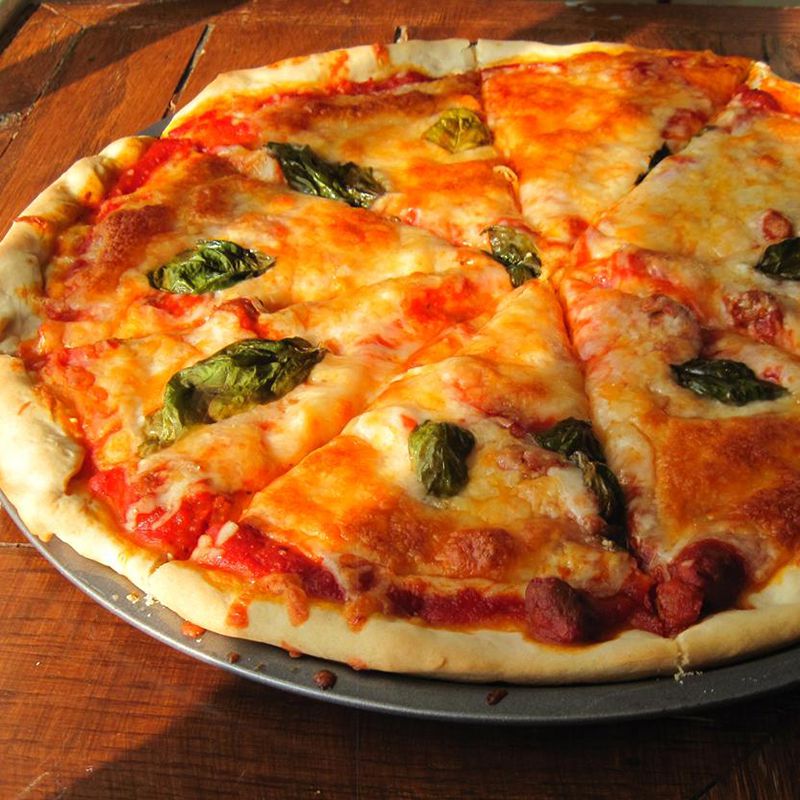
At the heart of every great pizza lies its dough, the canvas on which culinary masterpieces are crafted. The science of pizza dough is a delicate blend of art and chemistry, where a few simple ingredients transform into a complex web of flavors and textures.
Ingredients Matter
The primary ingredients for pizza dough are flour, water, salt, and yeast. The choice of each component and its proportions are pivotal in determining the final characteristics of the dough. High-quality, finely milled flour is preferred, with Italian Tipo 00 flour being a popular choice among pizzaiolos for its fine texture.
The interaction between yeast and sugar, found in flour, creates carbon dioxide gas, leading to dough fermentation and the formation of air bubbles. The longer the dough ferments, the more complex and developed its flavors become. Authentic pizzerias often employ extended fermentation periods, sometimes lasting for days, to achieve a distinctive flavor profile.
Properly balancing the hydration level of the dough, which refers to the ratio of water to flour, is crucial for texture. A wetter dough yields a softer, chewier crust, while a drier one results in a crisper texture. Achieving the perfect hydration is a skill that distinguishes master pizzaiolos.
Kneading and Proofing
Kneading the dough is a vital step in the pizza-making process. It not only distributes the yeast and water evenly but also develops the gluten structure, contributing to the dough’s elasticity. Properly kneaded dough is smooth, elastic, and can be stretched thin without tearing.
You should go and try pizza made in this way while your car is getting fixed at the AC specialist in Toronto.
After kneading, the dough is left to rest and rise, a process known as proofing. This allows the yeast to produce carbon dioxide and expand the dough. The ambient temperature and duration of proofing are carefully controlled variables that influence the dough’s flavor and texture. In colder temperatures, the dough ferments more slowly, while warmer conditions accelerate the process.
Sauce Secrets: The Tomato Base
The next critical component of pizza is the tomato sauce. The tomato sauce is not just a topping; it’s the foundation of flavor that ties all the ingredients together. Authentic pizzerias often go to great lengths to source the finest tomatoes, usually San Marzano or plum tomatoes from Italy.
Did you know that there is a very cute Italian pizzeria right next to the car rental in Sarajevo where you can eat their famous pizzas while waiting for a car?
The Tomato Variety
San Marzano tomatoes, grown in the volcanic soil of Mount Vesuvius in the Campania region, are renowned for their vibrant flavor, low acidity, and minimal seeds. Their unique characteristics make them ideal for pizza sauce. These tomatoes are often canned at the peak of ripeness, preserving their freshness.
Creating the perfect tomato sauce is an art in itself. The tomatoes are crushed or blended, and then a dash of salt and a touch of olive oil are added to enhance the natural sweetness of the fruit. Many pizzerias also incorporate fresh basil, garlic, and a pinch of red pepper flakes for additional layers of flavor. There are many recipes recorded and produced at the video production in New Jersey which can show you all the secrets of making delicious pizza!
The Role of Cooking Time
The cooking time of the sauce is a science that should not be overlooked. Long, slow simmering allows the sauce to reduce, intensifying its flavors and thickening its consistency. The sauce should be cooked until it reaches a velvety, harmonious texture.
The Art of Toppings: Cheese and More
The variety of toppings used in pizza preparation is seemingly limitless, but two staples stand out as essential: cheese and fresh ingredients.
Mozzarella: The Star of the Show
Mozzarella cheese, with its creamy, mild flavor and exceptional melting properties, is the quintessential choice for pizza. Traditional Neapolitan pizzas typically feature mozzarella di bufala, made from water buffalo milk, which adds a unique richness to the cheese.
The cheese must be evenly distributed across the pizza, and the amount used is calculated to achieve the ideal cheese-to-crust ratio. Using too much cheese can overwhelm the other ingredients while using too little can result in a dry and unsatisfying pizza.
You can sit at the famous Italian restaurant to try mozzarella pizza while waiting for the limo service to provide you a car!
Fresh Ingredients for Vibrant Flavors
The choice of fresh ingredients is a defining characteristic of authentic pizzerias. Locally sourced vegetables, herbs, and meats are preferred, ensuring that the toppings are at their peak of flavor and quality.
Tomatoes, basil, and olive oil are common additions, creating a harmonious interplay of flavors. Other toppings, such as prosciutto, arugula, mushrooms, and even truffle oil, offer endless possibilities for customization.
The Perfect Bake: Oven and Techniques

The science of pizza extends to the cooking process, where the oven and techniques employed play a vital role in achieving the perfect pie.
You will get a slice of this kind od pizza if you ask while waiting for an appointment at the health and wellness center in Nolensville TN!
The Traditional Wood-Fired Oven
Authentic pizzerias often use wood-fired brick ovens, known as “pizzaiolo ovens.” These ovens are heated to extremely high temperatures, often exceeding 800°F (427°C). The intense heat allows for rapid cooking, typically taking just a few minutes to achieve a perfectly blistered, thin crust with a soft and tender interior. Did you know that some of the most famous pizza places were renovated thanks to the Westchester remodeling service?
The Importance of Heat Distribution
The brick oven’s dome shape and refractory materials provide even heat distribution, ensuring that the pizza cooks uniformly. Pizzas are often placed on the oven floor or on a rotating surface called a peel to cook evenly on all sides.
The Technique: Turning and Timing
Pizzaiolos use a practiced technique to turn the pizza while it cooks. This ensures that all sides are exposed to the intense heat, achieving the signature charred crust. The entire process requires precise timing, as a few seconds can make the difference between a perfectly cooked pizza and a burnt one.
The Quest for Authenticity
In the world of pizza, authenticity is the golden standard that separates exceptional pizzerias from the rest. Discerning the genuine article requires a keen eye and knowledge of the key components of a traditional Neapolitan pizza. Did you know that the best way to eat a pizza is one of the cotton robes for women?
Certification and Associations
One way to identify authentic pizzerias is through certification and association memberships. Organizations like the Associazione Verace Pizza Napoletana (AVPN) have strict guidelines for what constitutes a true Neapolitan pizza. Pizzerias that adhere to these guidelines are often awarded certification and proudly display the AVPN logo.
Look for the Classics
A classic Margherita pizza, topped with tomato sauce, mozzarella, basil, and olive oil, is a hallmark of authenticity. The Margherita represents the essence of Neapolitan pizza and is a reliable litmus test for the quality of a pizzeria.
Neapolitan-Style Characteristics
Authentic Neapolitan pizzas are often small in size, around 10-12 inches (25-30 cm) in diameter, with a thin, soft, and pliable crust. The pizza is lightly topped, allowing the ingredients to shine without overwhelming the dough.
Pizza Cook Time
Another clue to authenticity is the cooking time. Neapolitan pizzas cook incredibly quickly, typically in just 90 seconds to 2 minutes. The high temperature of the oven and the thinness of the dough are essential for achieving this rapid cooking time.
The Flour Test
If you’re still in doubt, look at the flour used. Authentic Neapolitan pizzerias typically use Italian Tipo 00 flour. If you see this flour mentioned on their menu or in their kitchen, it’s a strong indicator of authenticity.
The Flavor Revolution: Pizza Innovations and Global Influence
As we explore the ever-evolving landscape of pizza, it becomes evident that innovation and globalization have played crucial roles in reshaping this iconic dish. In this section, we delve into the exciting developments and influences that have expanded the boundaries of pizza.
The best way to do business consulting with advisors is over a nice and hot pizza! It can put you both in a good mood!
Pizza Beyond Borders
The spread of pizza to different corners of the world has given rise to countless regional variations and creative adaptations. Each locale adds its own unique flavors and culinary traditions to the pizza-making process, resulting in a rich tapestry of global pizza styles.
New York-Style Pizza
New York-style pizza, renowned for its foldable, thin crust and generous toppings, is a quintessential American favorite. This style embodies the American dream of reinventing the pizza, featuring a wider range of toppings and larger slices. The dough is characterized by a crispy exterior and a softer interior, striking a perfect balance.
Chicago Deep-Dish Pizza
On the other side of the United States, Chicago offers a completely different pizza experience with its iconic deep-dish pizza. Known for its towering, pie-like structure, this pizza is filled with layers of cheese, toppings, and a chunky tomato sauce. The crust is thick, buttery, and utterly satisfying.
Did you know that contractors in Colorado Springs worked on renovating many pizzerias?
Californian Pizza
California has also made its mark on the pizza world with inventive creations that embrace local produce. Californian pizza often features unique toppings like goat cheese, arugula, and barbecue sauce. It’s a testament to the diversity of flavors that pizza can encompass.
International Twists
Pizza has traveled far beyond the United States, finding a home in nearly every corner of the world. In Japan, sushi-inspired pizza creations incorporate ingredients like seaweed, eel, and wasabi. In India, you can savor a tandoori chicken pizza with exotic spices. The global influence of pizza demonstrates its adaptability and universal appeal.
The Rise of Artisanal Pizzerias
As pizza has matured, so has the appreciation for artisanal pizzerias. These establishments emphasize traditional and high-quality ingredients, expert techniques, and a commitment to perfection. Artisanal pizzerias often source local, organic, and sustainable ingredients to create exceptional pizzas that cater to a discerning clientele.
Innovations in Toppings and Flavor Pairings
The creativity of modern pizzaiolos knows no bounds. New toppings and flavor combinations continue to emerge, from roasted beet and goat cheese pizzas to BBQ pulled pork with pineapple. Artisanal pizzerias frequently experiment with seasonal ingredients, allowing their menus to evolve with the harvest. These kinds of treats you can get after finishing a Kambo ceremony in Austin TX as an additional reward!
Revival of Heritage Grains
In the pursuit of authenticity and exceptional flavor, some pizzerias are revisiting heritage grains and traditional milling techniques. These ancient grains, such as emmer, spelled, and einkorn, offer unique flavors and nutritional benefits that enrich the pizza experience.
Pizza and Health-Conscious Dining
The increasing focus on health-conscious dining has led to innovations in pizza preparation. Many pizzerias now offer gluten-free crusts and vegan cheese options, ensuring that everyone can enjoy this beloved dish without compromise.
Did you know that even dogs at the puppy training in Seattle get little pizza snacks?
The Pizzaiolo as a Culinary Artist
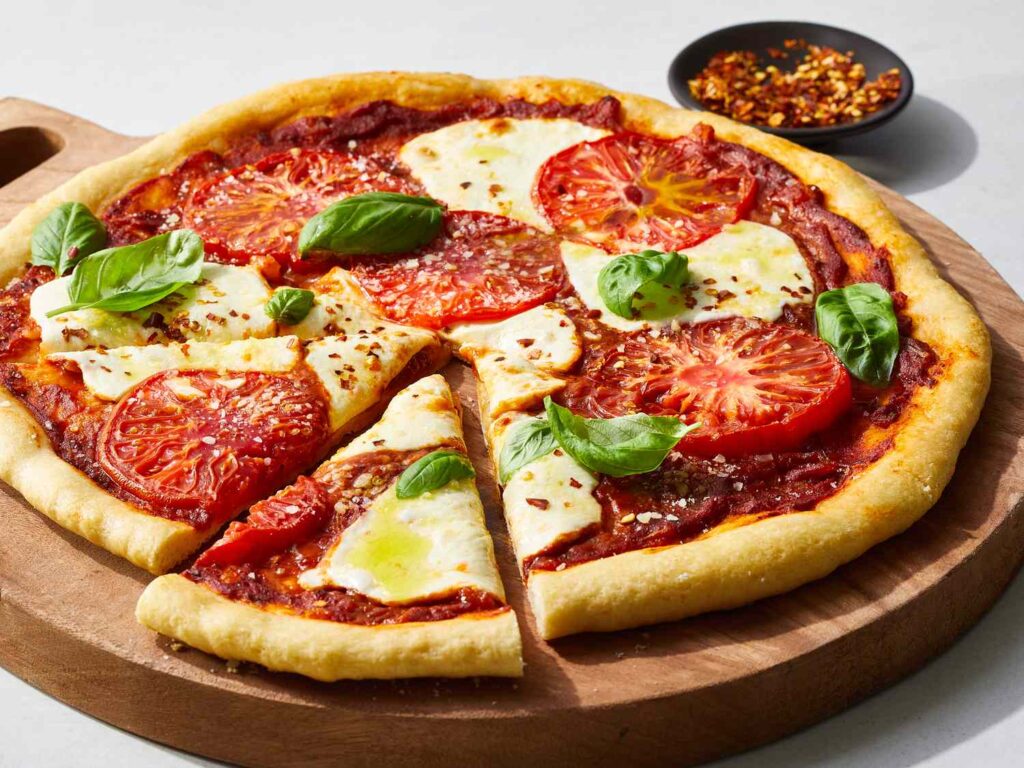
Today’s pizzaiolos are often viewed as culinary artists, applying their creative skills and knowledge to craft pizzas that are both visually appealing and explosively flavorful. You can indulge in this wonderful meal after finishing your scheduled physical therapy in Chicago! The mastery of traditional techniques, combined with a flair for innovation, sets these modern pizza-makers apart.



